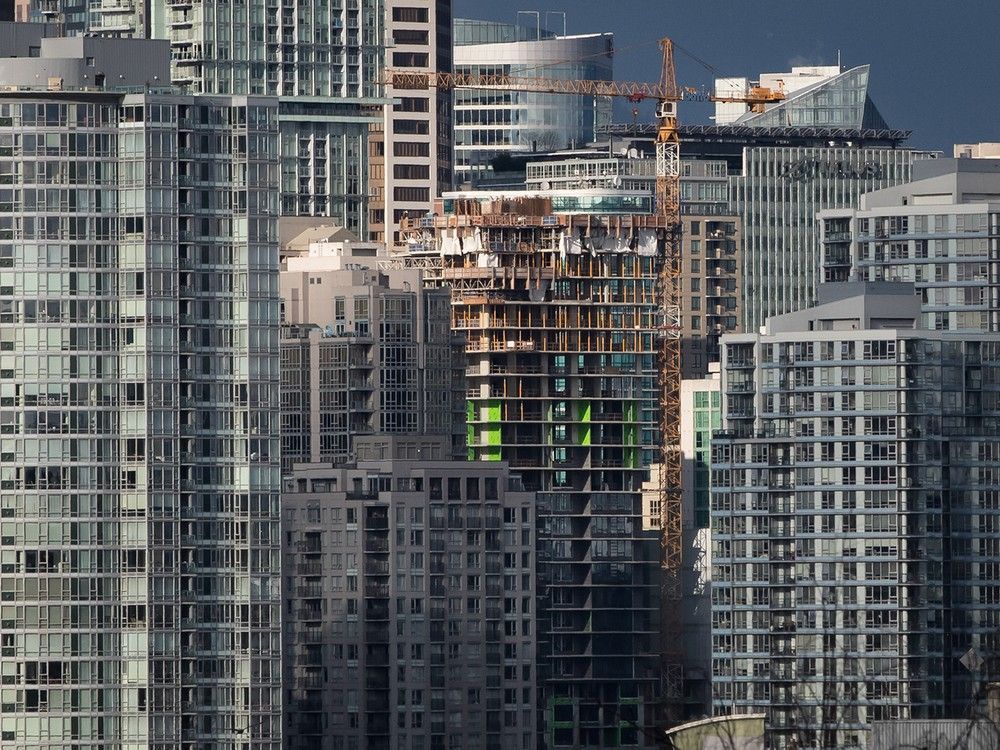
For the first time in 74 years, the population of both B.C. and Ontario dropped by a few thousand people in the first months of 2025.
Sounds dramatic. And in some ways it is.
That’s even though the dip in the total number of people doesn’t make a statistical difference for either province. In the first quarter of this year, B.C. had 2,357 fewer residents than at the end of 2024; Ontario lost 5,644.
But, as Statistics Canada says: “While small compared to the size of each province, these were the largest quarterly losses in population for both Ontario and B.C. since comparable records began in 1951. ”
In each of the past two years B.C. had added more than 160,000 people, an unprecedented annual growth rate of more than three per cent, almost all of it fuelled by Ottawa’s openness to international migration.
The fact this year has seen the most significant dip in the two provinces’ populations in almost three generations appears to signal the end of Canada’s recent ultra-high migration experiment.
This new phenomenon, a population standstill, is having repercussions, especially on the housing market.
The federal Liberals, after a decade in power, seem to have finally got the public’s message that their policies were creating too much demand on housing and rents. As a result, in May Prime Minister Mark Carney said, albeit vaguely, that his government will bring “overall immigration rates to sustainable levels.”
Conservative Leader Pierre Poilievre, meanwhile, is becoming bolder. Last month he said he wants “severe limits” on population growth to restore some equilibrium to jobs, social services and housing.
Such talk is alarming the property development industry, which is experiencing a softening of demand. Even though many analysts say it’s simply part of the real-estate cycle, developers are renewing calls for a return to more foreign buyers in Canadian housing.
Coinciding with the change in attitude among Ottawa’s politicians, StatCan has just published two reports that highlight the power that vigorous migration rates have had on the cost of housing.
Last week a new analysis led by Feng Hou showed that in the 15 years leading to 2021, the rise in immigration was linked to a 21 per cent i ncrease in median house values in 53 of Canada’s large cities.
Another StatCan report in May, by Haozhen Zhang and Hou, found immigrants own their own homes at a higher rate per capita than Canadian-born people.
“Immigrants exhibit higher housing use compared with Canadian-born individuals,” it said. “Immigrants occupy, on average, 310 owned units … per 1,000 people. By contrast, Canadian-born individuals occupy 271 owned units … per 1,000 people.”
However, the two studies, which correctly emphasize that other factors, such as interest rates, also impact housing costs, point to just the tip of how Canada’s migration iceberg affects real estate. That’s partly because the StatCan research primarily focuses on immigrants, defined as those who become permanent residents, which in 2023 amounted to 471,000.
Such immigrants these days make up just a fraction of newcomers. There is now an historic high of about three million temporary residents in Canada, mostly international students and guest workers.
Just as importantly, the StatCan studies don’t look at how foreign money has in the past 15 years infiltrated the housing market. Other researchers have found evidence of the power of transnational capital to skew markets.
A new peer-reviewed paper by B.C. researchers Josh Gordon, David Ley and Andy Yan shows foreign capital, especially from China, has been a striking factor in raising B.C. housing values, a fact the authors say is often “celebrated behind closed doors by the real estate industry.”

Given Canada’s big cities have some of the most unaffordable homes in the world, Poilievre is responding with a policy position that aims for “negative growth” in population.
“We’re going to need more people to leave than to come for the next several years,” Poilievre told The Hub, an online news outlet. “We have to have a hard rule … that the growth in the housing stock, job market and availability of doctors must always be higher than the growth in population.
“We can’t overload any of those systems for our own people, and it’s not fair for the people who come. It’s actually a false promise if we invite people here and then they have no place to live.”
In the midst of such Tory and Grit rhetoric, what is actually happening to migration rates?
The Liberals are marginally dropping official immigration targets to up to 436,000 this fiscal year, which compares with 250,000 before they were brought into power in 2015. Temporary residents remain at 7.1 per cent of the population, compared with three per cent before 2020 . Carney’s new goal is five per cent.
Even with overall migration rates far above what they were a decade ago, property developers and their allies are telling the public and politicians they’re stressed.
Big real-estate players, like Wesgroup Properties LP and the Rennie Group, haven’t been shy about telling journalists they’re laying off staff. The luxury condo marketers at Rennie Group and Michael Audain , owner of Polygon Homes , are also calling for more foreign cash in Canadian housing.
So is Anne McMullin, longtime president of B.C.’s Urban Development Institute, which represents developers. She’s trying to rouse politicians at all levels into action .
Five weeks ago McMullin sent a letter to federal Housing Minister Gregor Robertson arguing “Canada’s multi-family development model depends on pre-selling 60 to 70 per cent of units to secure construction financing.”
“With the departure of both foreign buyers and domestic investors, this model is faltering and choking off the supply pipeline,” she wrote.
The recent decline in real-estate market activity has “shown that (foreign buyers) were a critical componen t of the capital stack needed to get projects off the ground,” McMullin said.
Robertson and the Liberal cabinet need to “amend the foreign-buyer ban to allow foreign investment in newly constructed homes that carry rental covenants or demonstrable housing contributions,” said her letter.
“Looking ahead, the federal government should also consider expanding this allowance to permit foreign buyers to reside in the homes they purchase.”
How will Robertson and Carney react?
Even though both have received political donations from developers , it’s hard to predict. Opinion polls show a firm majority have turned against current migration volumes.
But since Carney hasn’t said anything more specific than that he wants “sustainable levels” of migration, he’s left the door open to do almost whatever he sees fit to respond to the housing crisis.